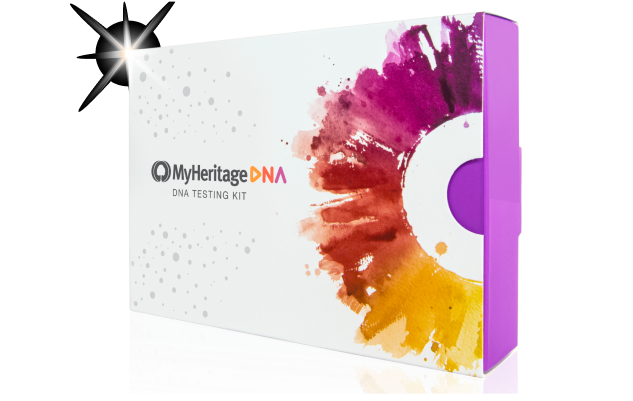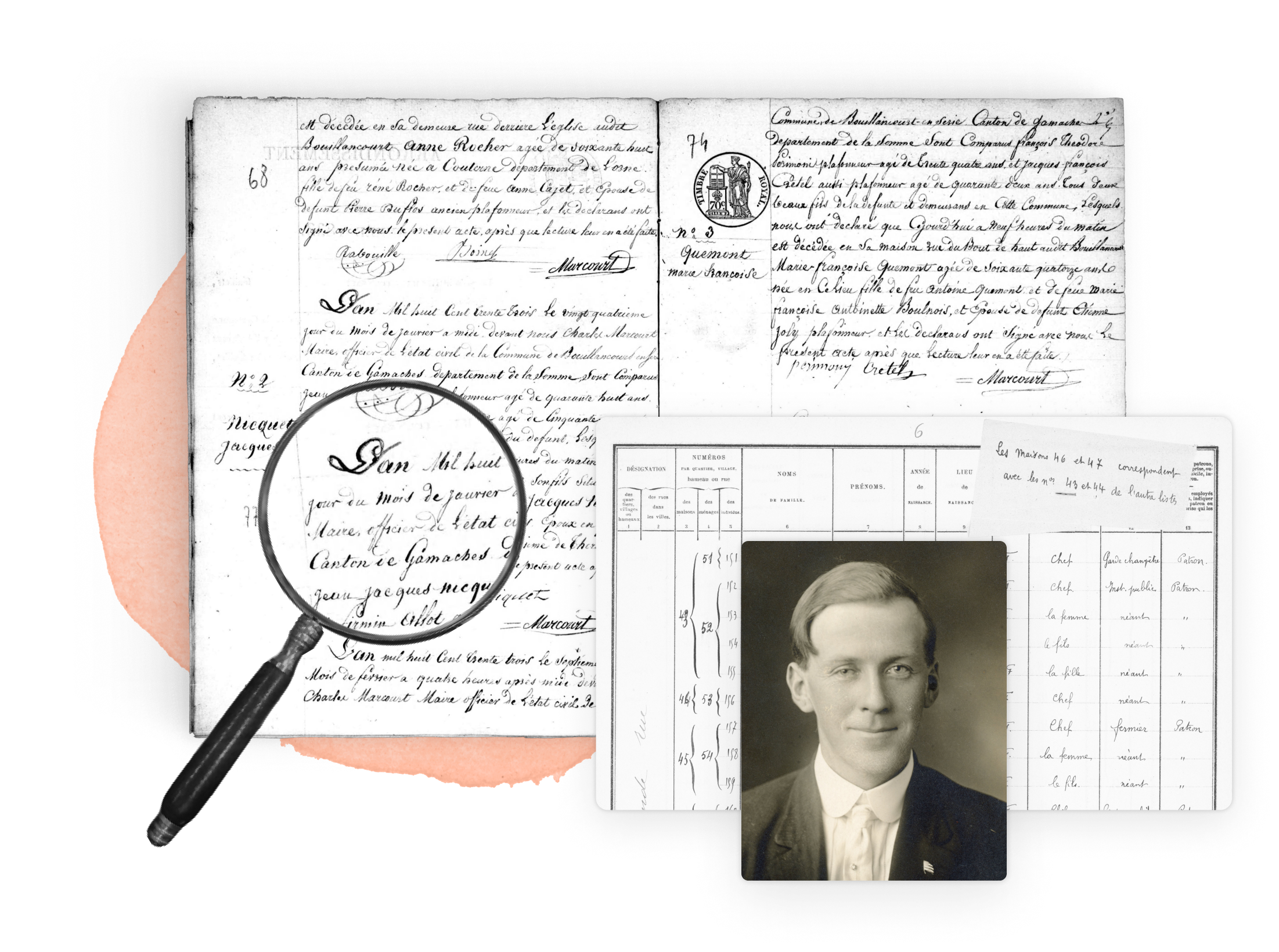Funeral cards are often overlooked sources of information in genealogy research. They provide some basic birth, death, and burial information that can help lead to locating the actual vital records.
Research your ancestors on MyHeritage
What are funeral cards

Funeral cards may also be known as prayer cards, remembrance cards, or memorial cards. They have been around for a long time and have changed over the years. Today, depending on religious or ethnic customs, they are frequently distributed at funerals as mementos of the deceased. They are usually small cards with religious pictures on one side and the deceased person's name, date of death, sometimes the birth date, a photo, and a prayer. They are available for mourners as a remembrance. Religious pictures are sometimes replaced with patriotic pictures if the deceased was an active military member, veteran, or war hero.
History of funeral cards

According to the funeral supply company, National Funeral Supplies, one of the first prayer cards was created in the 15th century. It was a woodcut print with a picture of Saint Christopher. These types of prayer cards weren’t handed out to everyone at a funeral, but they did help pay tribute to a deceased person.
Many of the first prayer cards were handmade. They started to become more popular at funeral services in the 1700s and were printed on thick cardboard and featured silver leaf embellishments on them. During the 1840s, funeral cards appeared in England and initially served as invitations to a high-profile funeral. It was proof that you were invited and were close to the family of the deceased. Today the old cards are collector’s items and can be worth a lot of money if the cards represent people of fame and power or were involved in extremely tragic or publicized deaths.
The Industrial Revolution, improved printing, commercial processes, and postal services during the 19th century allowed for greatly expanded uses of funeral cards by the general public. Memorial cards were made available to the general public after the deaths of Abraham Lincoln, John F. Kennedy, and Robert Kennedy as well as other famous people.
Today there is a lot of flexibility in the style of memorial cards. They can be flat funeral announcement cards, folded memorial cards, or prayer cards and can be small-sized paper, laminated, or larger sheets. Depending on the card and size the content may include poems, scriptures, prayers, tributes, quotes, special notes, birth and death dates, burial location, and date.
As our mourning practices change, funeral cards have adapted to new technology and changing preferences. In addition to printed cards, multimedia digital versions include video and audio recordings. These new versions can be shared worldwide almost instantly via email or social media.
Funeral cards and genealogy research

Funeral cards are often an overlooked resource for genealogy research. “They can serve as valuable pieces of family history. They become a part of the deceased person's legacy, documenting their existence and memorializing their life. Over time, these cards can be cherished as heirlooms, passed down through generations, allowing future family members to connect with their ancestry and learn about their heritage.”[1]
The cards don’t give the range of detail that is usually found in obituaries, but they can still be of great value for your research. Funeral cards will usually include basic information about the person who has died including the proper name, birth date, death date, possibly burial date, and location. This information can help locate vital records documentation.
Lastly, the funeral cards can be cherished as keepsakes or heirlooms and passed down to future generations.
Where to find copies of funeral cards
Funeral cards were collected by relatives and friends as a remembrance of the deceased. Many times these collections were handed down as heirlooms to descendants. Some may have been placed in family bibles or boxes with other papers or photos. As the interest in genealogy becomes more popular, the interest in finding and collecting these cards has also increased. Today websites have been created that contain databases of some funeral cards that have been contributed to various projects.
Explore more about funeral cards
The following list include a few websites that have been created to collect copies of donated funeral cards. Some sites only list name and data information and others display scanned copies.
- Ancestors At Rest
- Bucks County Genealogical Society Memorial Card Project
- Rock Island County Illinois Genealogical Society Funeral Card Index
- Carroll County Digital Heritage Scanning Website
- The Hudson County Genealogical & Historical Society Funeral Card Index
- Family Tree Magazine
- Funeral Cards at Cyndi's List


